The Fortified Church of Prejmer (Tartlau), Brasov County
In this trip report, we make a half-day trip from Brasov to the Saxon fortified church of Prejmer (Tartlau).
Brasov day trip
As I already mentioned in the previous chapter detailing the fortified church of Harman, the churches of both Hărman and Prejmer can easily be combined in a straightforward (half) day trip from the city of Brașov.
From Hărman it was a short drive to Prejmer, which has abundant public parking places right in front of the church. By the time I arrived in Prejmer, the morning mist still blanketed the landscape.
Prejmer is one of the seven of more than 150 Transylvanian Saxon fortified churches which have been put on the UNESCO World Heritage list, as there are quite a few aspects which make this church so special.
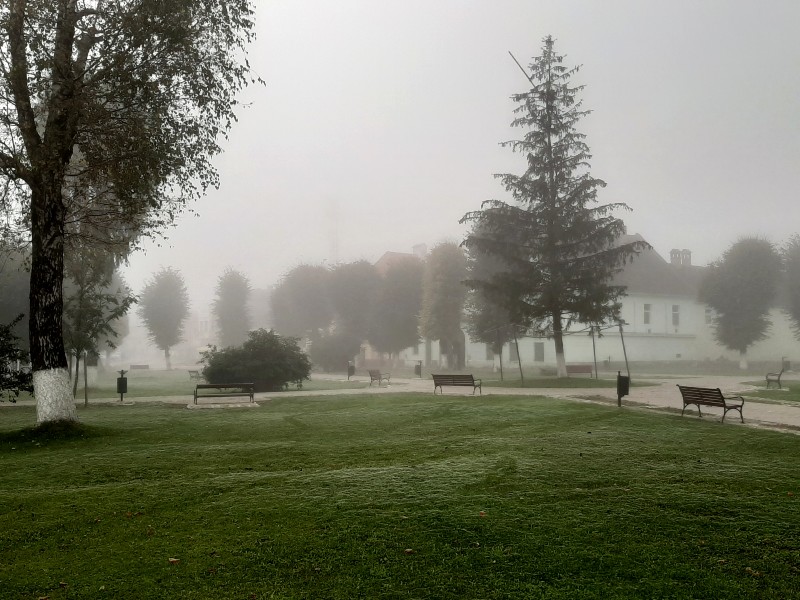
Tartlau
Prejmer is known by the name of ‘Tartlau’ in German.
Just like nearby Hărman, the fortified church was initially founded by the Teutonic Knights who were tasked in 1211 to construct fortifications throughout the Burzenland region around Brasov.
King Andreas II (or Andrew the Second, in English) allowed the Knights to bring along German settlers, which is how the Transylvanian Saxons as they became to be known arrived in these lands.
Strategic location
Compared to other Saxon towns, no other church in the immediate area has such massive fortifications as Prejmer.
This is mostly due to the immense strategic location of Prejmer. The town is located at the exit of the Buzău Pass which links Transylvania across the Carpathians to the city of Buzău in Wallachia.
At first the threat came from the Cumans, a Turkic nomadic people which made frequent incursions into the region from what is now south-eastern Romania and Bulgaria. Later on, it were the Ottomans who were the main enemy.

Entrance
From the large park in the centre of Prejmer, a long entrance tunnel leads into the fortified church.
About halfway this tunnel you will find the small ticket office where you have to buy an entrance ticket for a minor fee of around 10 lei (2 euro).
If you walk further through the tunnel you arrive at the barbican, the fortified outer courtyard of the gateway.


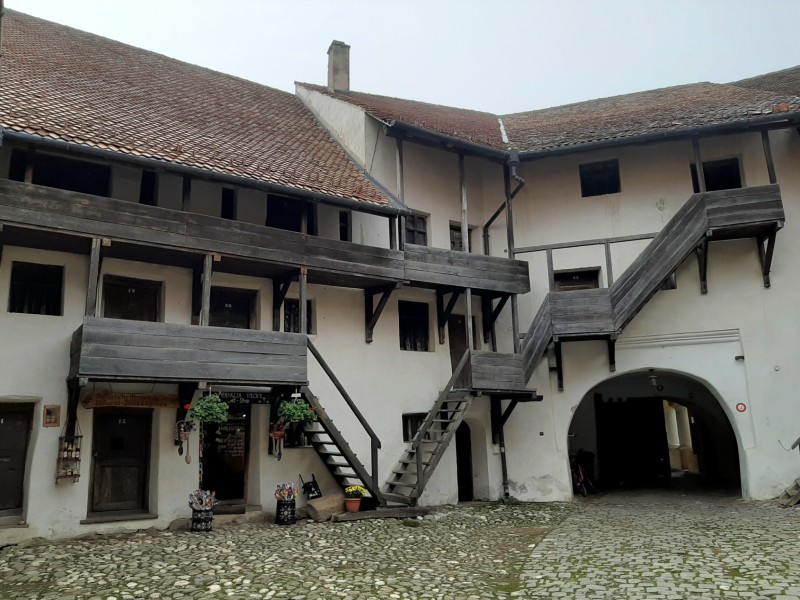
Inner courtyard
A second, more narrow tunnel leads from the barbican to the inner courtyard of Prejmer’s fortified church.
The courtyard has a completely different character compared to the fortified church of Harman, which felt more open and bright.
Although Prejmer was just as neatly preserved as Hărman, it certainly felt a bit less cosy and much more like a proper castle or fort.
The first thing you will notice are the dozens of small rooms in the outer wall, all linked by multiple ladders and wall-walks.
These hundreds of doors all lead to small wall chambers, some of which were used as storage rooms, others as accommodation units for soldiers and Prejmer’s townsfolk in case of an attack.
In total there are well over 270 of these wall rooms, which could shelter up to 1,600 people.
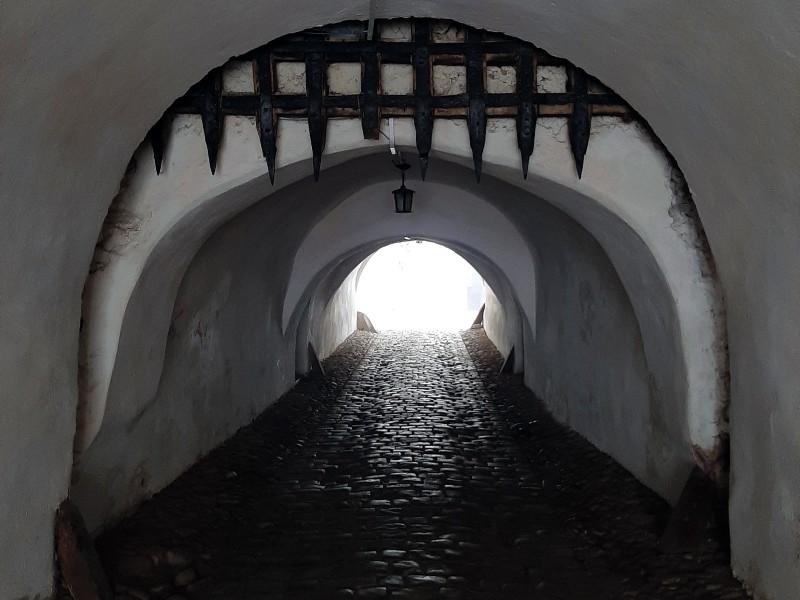
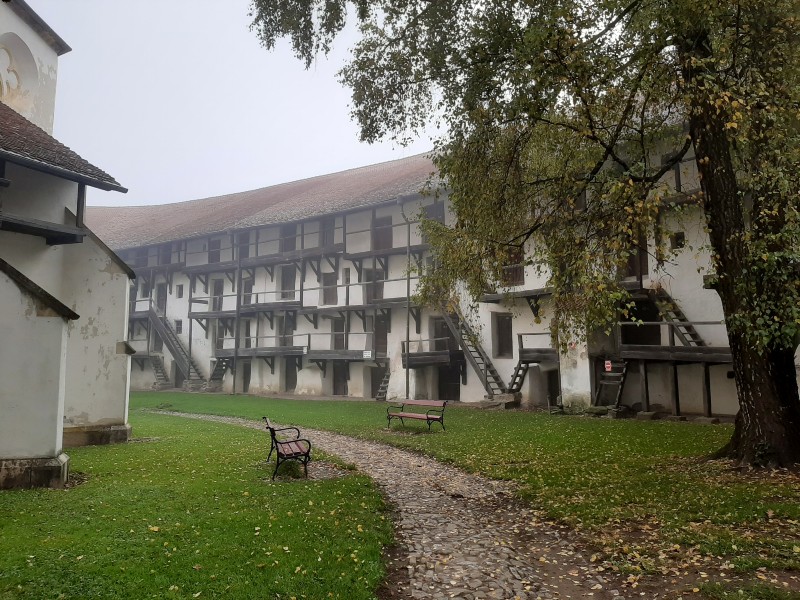

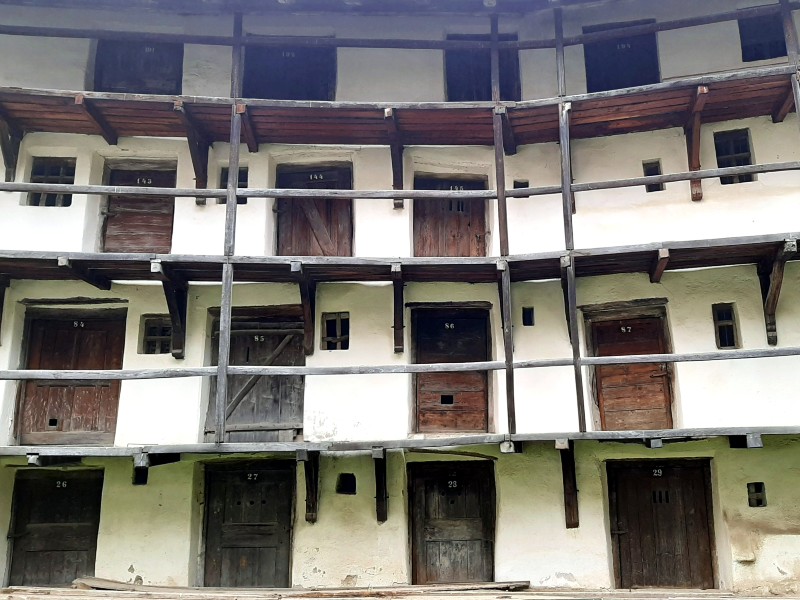
Walls
The circular walls measure up to 5 metres thick and reach nearly 12 metres in height, making them formidable obstacles for any invading army.
Originally, Prejmer’s fortified church had a couple of towers and bastions, although some of them no longer exist being demolished after sustaining frequent damage over the centuries.
This is clearly visible when you go back outside and walk around the fortified church as you can clearly still some collapsed walls denoting the location of these former towers.
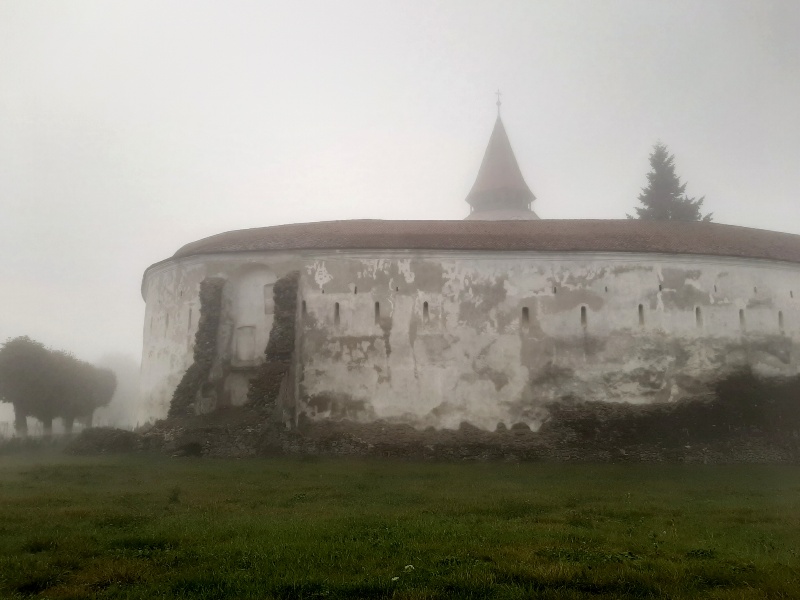
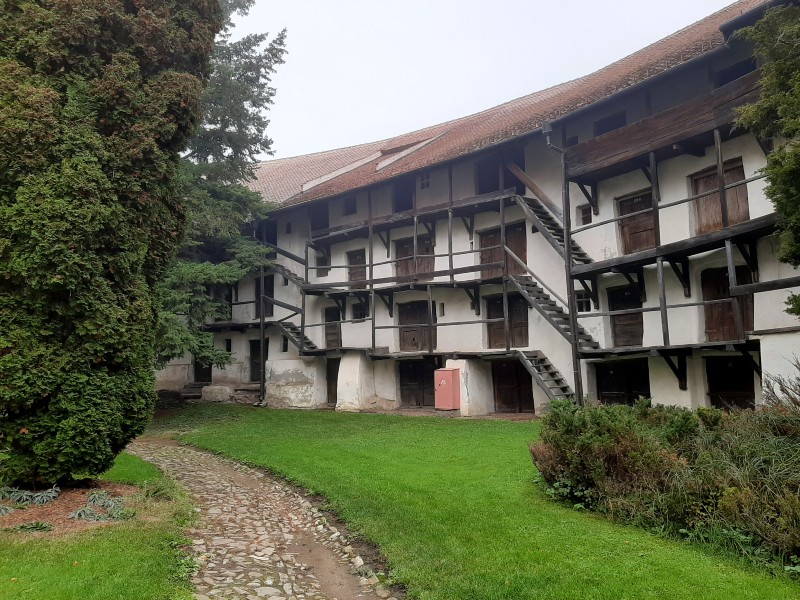
Exploring the walls
One of the greatest aspects of fortified church of Prejmer is that you can enter the corridors inside the walls, which lead to the battlement projections and crenels from where archers could fire their arrows at enemy soldiers.
Climbing these battlements is an amazingly fun experience, but do take care as the corridors can be narrow, uneven and dark.
They also stretch out of hundreds of metres over several levels, making them somewhat of a giant maze as well as there are only a few exits leading back into the inner courtyard.
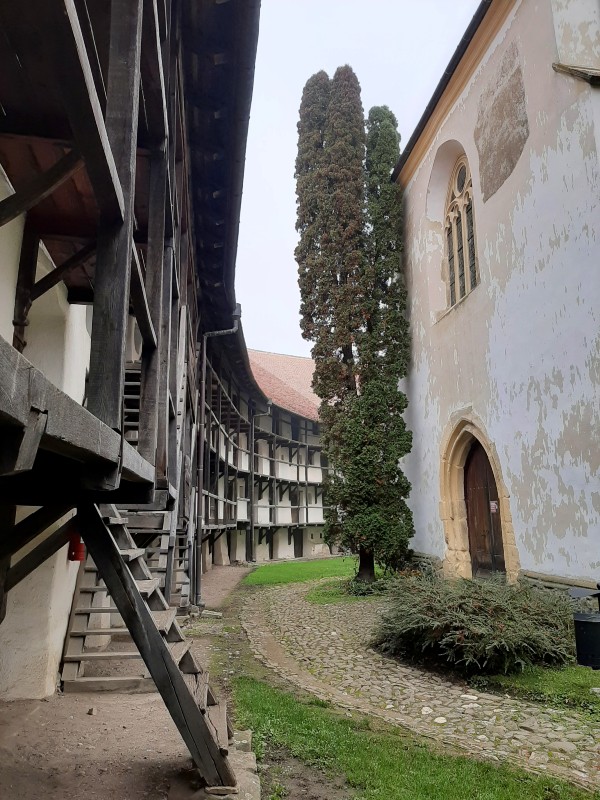
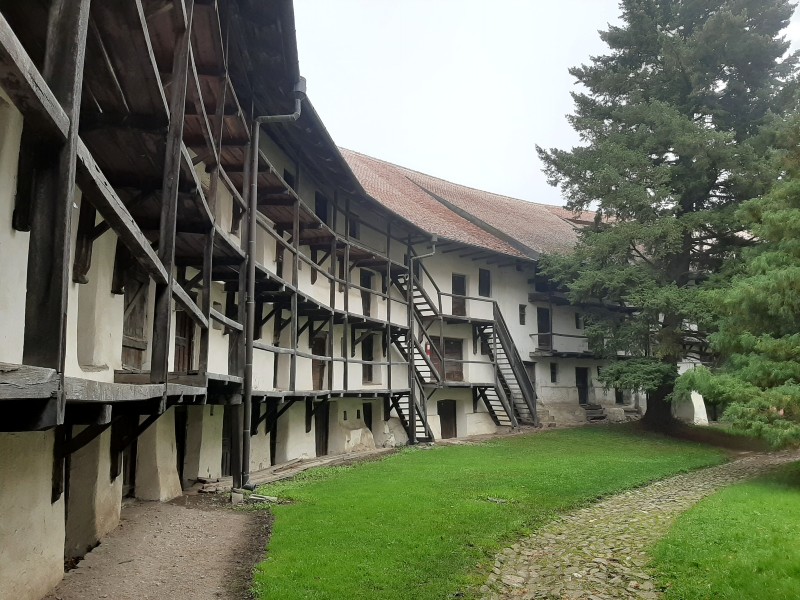
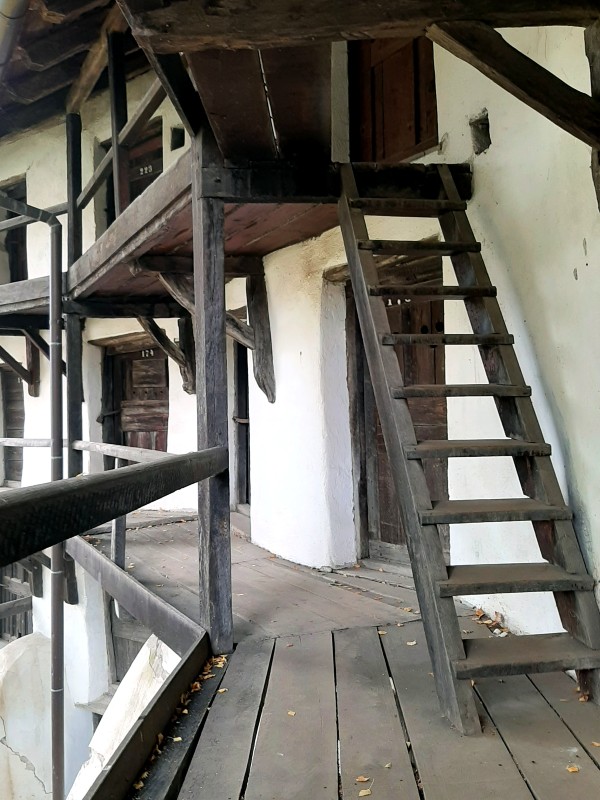
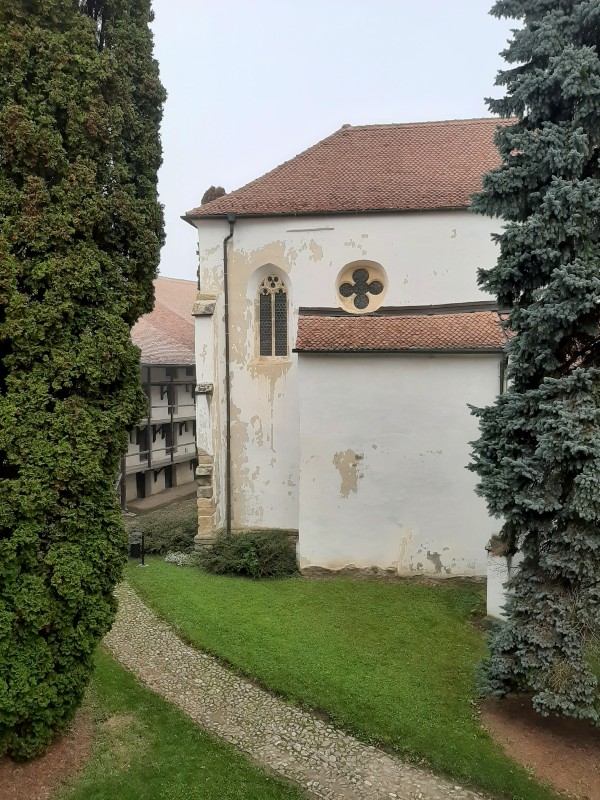
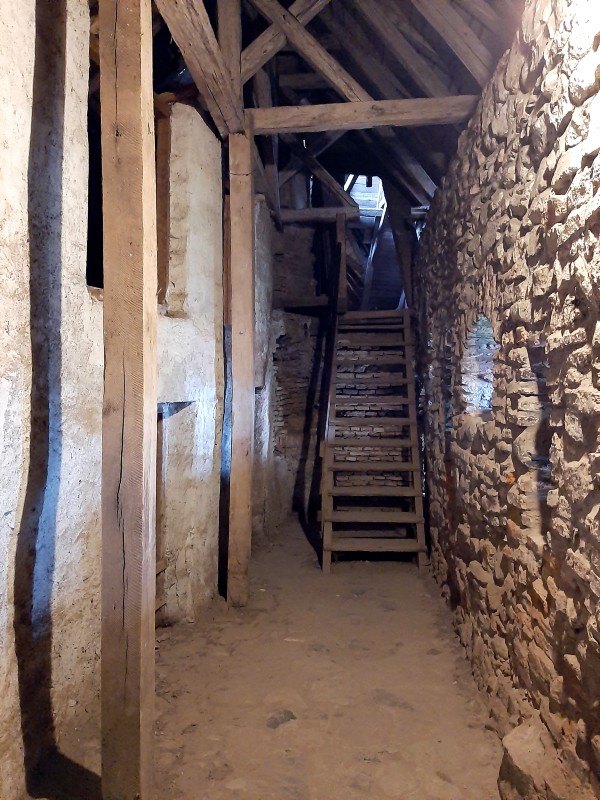
Church
The actual church itself is also well-worth a visit.
The ‘Kirchenburg von Tartlau’ (Tartlau fortified church) as it is known in German was originally built in the year 1218 following a Greek cross plan, unique for a Transylvanian church.
Prejmer’s fortified church combines Romanesque and Gothic styles and just like many other Saxon churches across Transylvania was subject to numerous modifications over the years.
It was originally a Roman Catholic church run by the Cistercians, although it became Lutheran after the Reformation.
The magnificent altarpiece, one of the oldest in Transylvania, is the highlight of the church. Its central panel depicts the crucifixion of Jesus Christ.
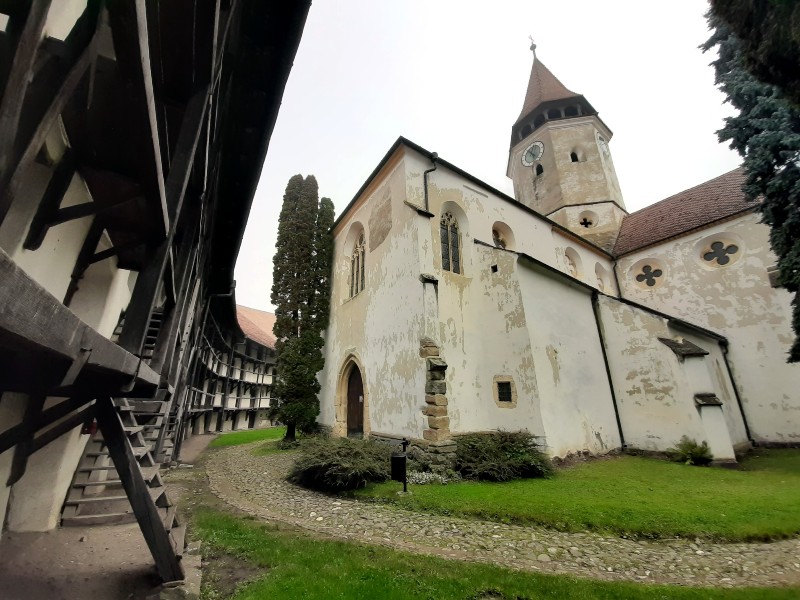
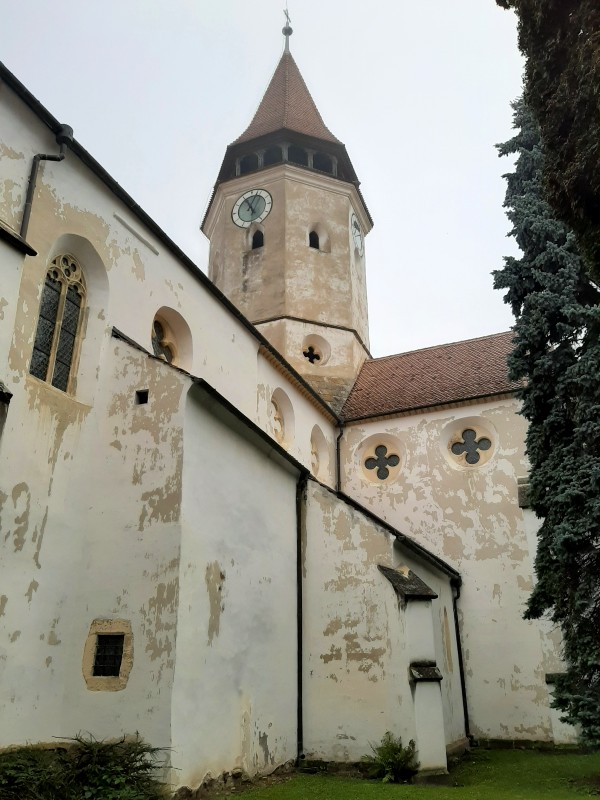
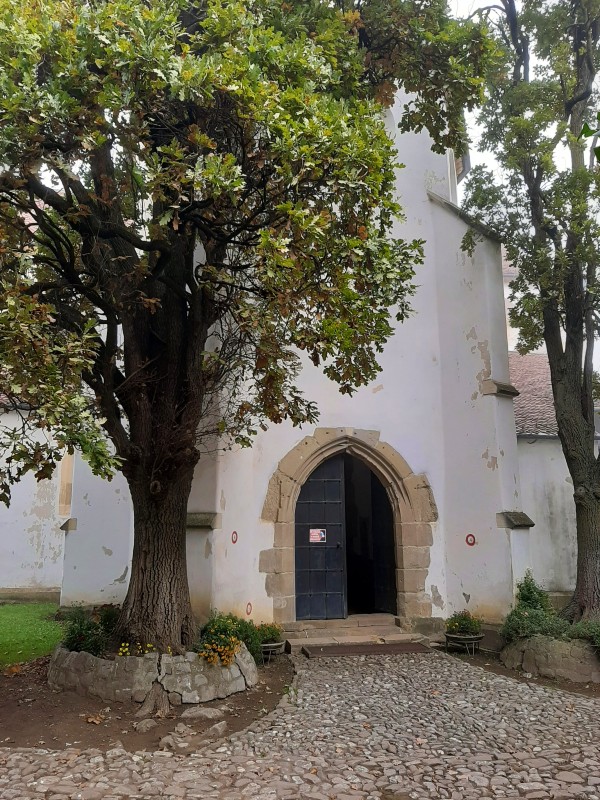
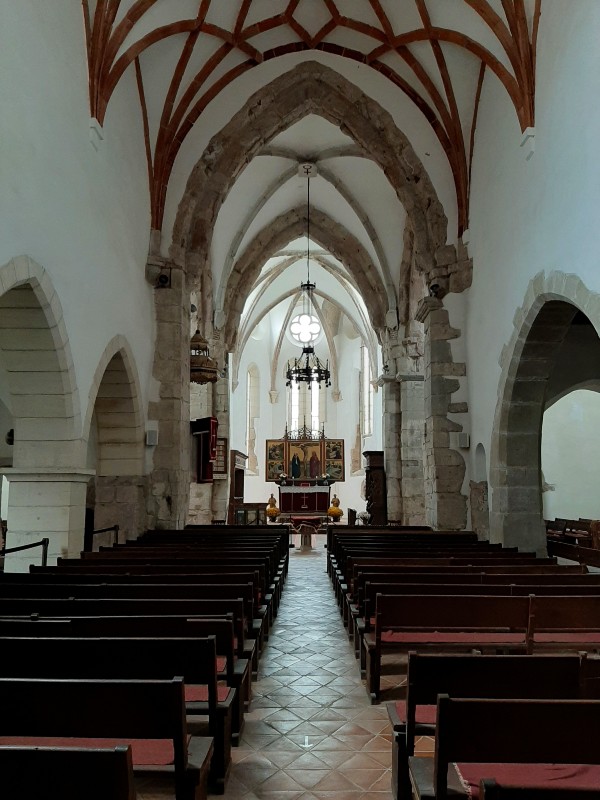
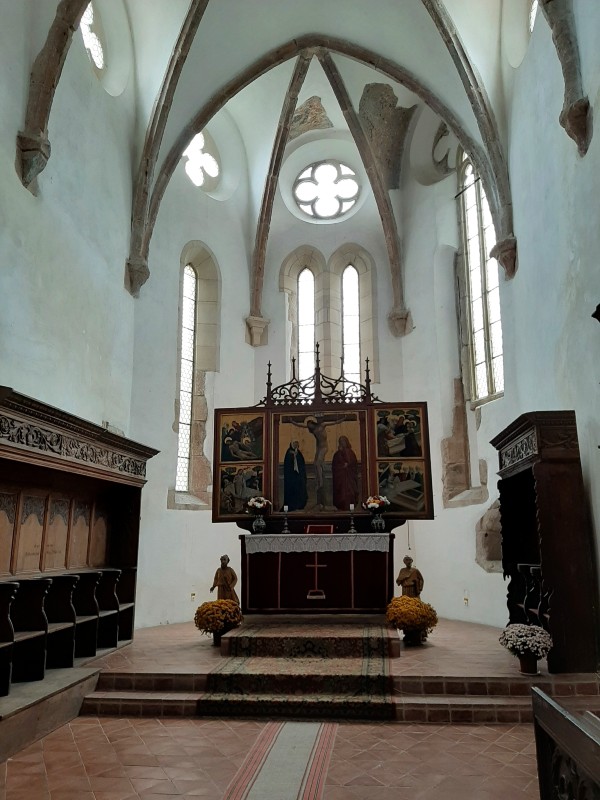
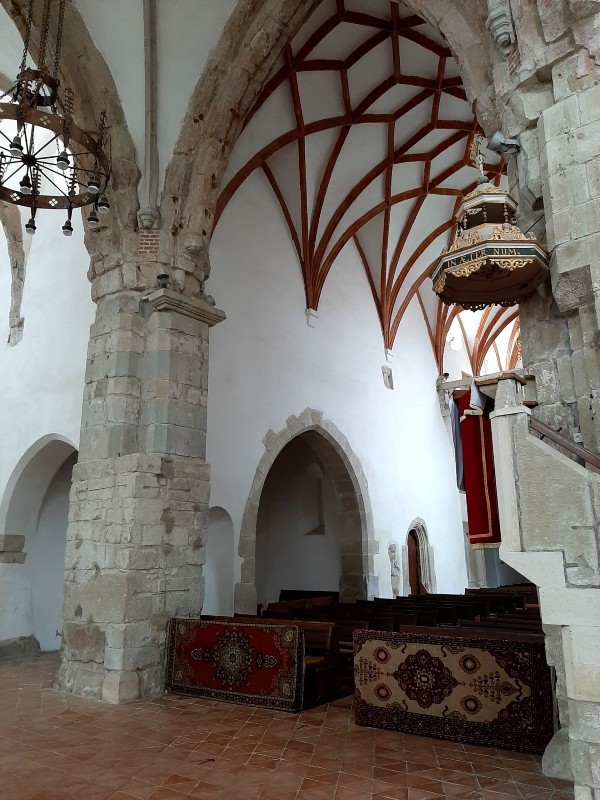
Museum
Just like the fortified church in Harman, the church in Prejmer also features a small museum which depicts the lifestyle of the Transylvanian Saxons throughout history.
Exhibitions show different clothes, furniture, tools and even an entire old school classroom.

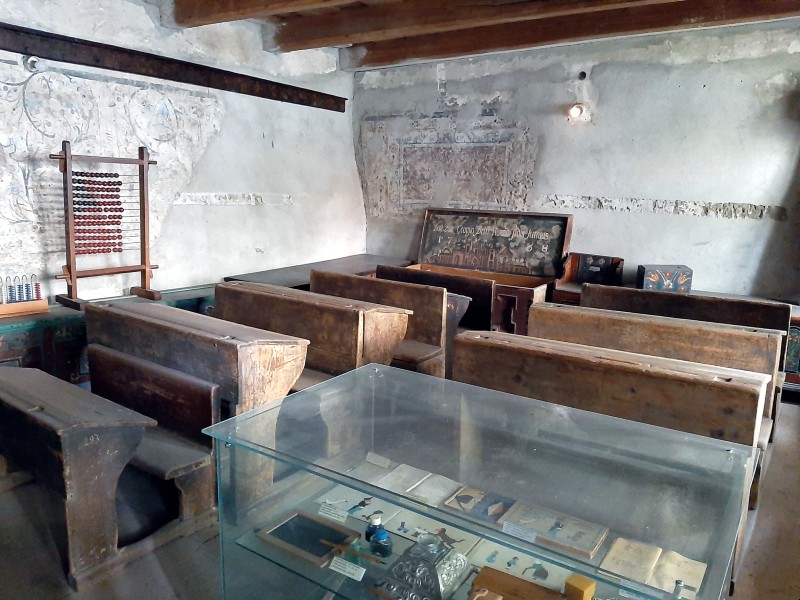
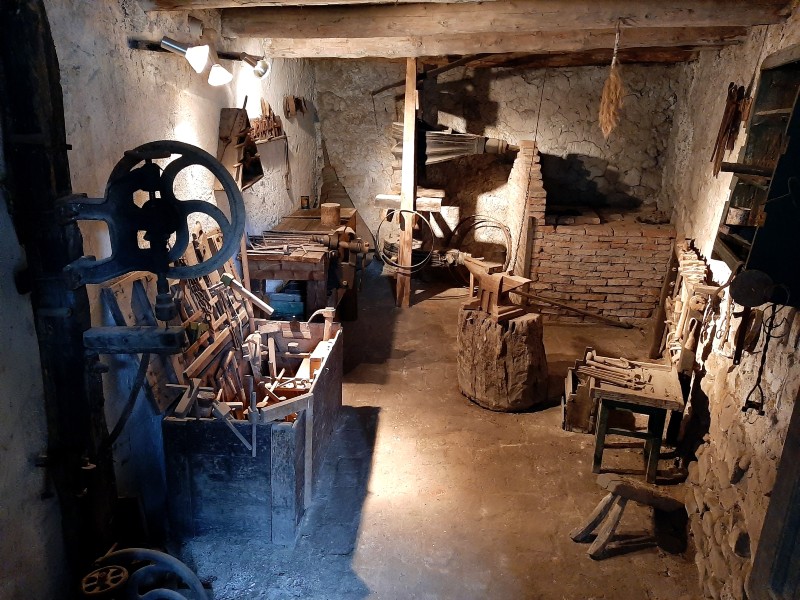

Conclusion
Just like the fortified church of Harman, the Saxon fortified church of Prejmer is certainly worth a visit too. Together these two churches make for an excellent half-day trip from Brasov.
Compared to Hărman, the church of Prejmer (Tartlau) definitely feels more like a real fortress. It’s great fun to climb up on all the ladders, explore the storage rooms, or get lost in the endless corridors inside the outer walls.
The unique church also features a small museum which gives a decent insight into local life around one or two centuries back in time.
If you plan to visit Brasov on your trip through Romania, I can certainly recommend everyone to travel the few kilometres out of town to Prejmer.
How to reach Prejmer?
As is normally the case in Romania, going by car is the easiest and fastest option. If you have a rental car for your Romanian trip visiting both Harman and Prejmer is very straightforward, although hiring one just to visit these two churches wouldn’t make sense.
If you don’t have your own wheels, either go by taxi from Brasov or use public transport.
From Brasov, frequent buses make the 15 kilometres trip to Prejmer. Autogari.ro has a good overview of the available options and timetables.
You can also take a local train to Prejmer as the town is located on the Brasov – Sfantu Gheorghe railway. Do however note that the station named ‘Ilieni’ is located slightly closer to Prejmer’s town centre and the fortified church than the stop named ‘Prejmer Hm’. Trains are operated by both the national railway company CFR Călători as well as privately owned Regio Trans.
The bus service between the town centres of Prejmer and Harman is infrequent, although all buses back to Brasov can drop you off on the DN11 at the entrance to the town of Harman, from where you would have to walk the last 20 minutes to its fortified church.
You can also take the train one station back to Harman, although Harman’s railway station is also located a good 20-25 minute out of the town centre.
Trip report index
This article is part of the ‘Visiting the Saxon Fortified Churches of Transylvania‘ trip report, which consists of the following chapters:
1. The Fortified Church of Harman (Honigberg), Brasov County
2. The Fortified Church of Prejmer (Tartlau), Brasov County (current chapter)
3. The Fortified Church of Feldioara (Marienburg), Brasov County
4. A Visit to Rupea Fortress
5. The Fortified Church of Homorod (Hamruden), Brasov County
6. Racoș: Exploring an Extinct Volcano and Abandoned Castle
7. In the Footsteps of King Charles: A Visit to Viscri, Romania
8. A Visit to the Fortified Church of Viscri, Brasov County
9. A Night Walk Around the Citadel and Old Town of Sighisoara
10. Review: Hotel Casa Wagner, Sighisoara, Romania
11. The Fortified Church of Saschiz (Keisd), Mureș County
12. The Fortified Church of Cloasterf (Klosdorf), Mureș County
13. The Fortified Church of Mesendorf (Meschendorf), Brasov County
14. The Fortified Church of Crit (Deutsch-Kreuz), Brasov County
15. The Fortified Church of Biertan (Birthälm), Sibiu County
16. The Fortified Church of Hosman (Holzmengen), Sibiu County
17. Review: Brukenthal Palace Hotel, Avrig
18. A Visit to Sambata de Sus and the Brancoveanu Monastery
19. Into the Carpathians: A Beautiful Drive to Moieciu de Sus

